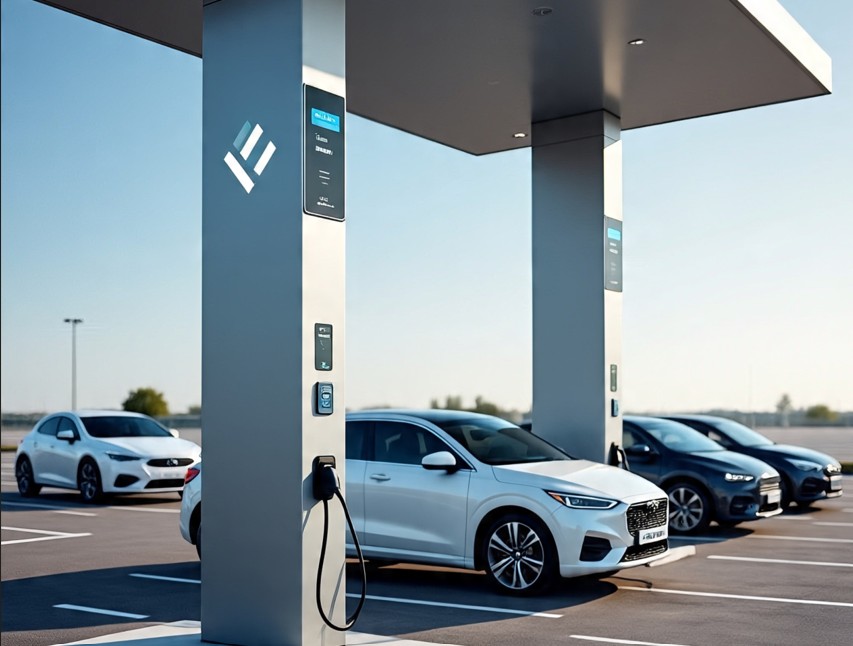
Planning an electric vehicle (EV) road trip across America in 2025? It might sound like a modern-day adventure from a sci-fi movie or a logistical headache waiting to happen. The truth is, it’s a bit of both — a thrilling, eco-friendly journey with a bit of planning needed to dodge what some drivers call “charging nightmares.”
The Dream: Why EV Road Trips Are More Doable Than Ever
Thanks to rapid advancements in battery tech and loads of new charging stations popping up, driving an EV from coast to coast is no longer just for the brave or the overly prepared.
- Range Has Leveled Up Big-Time: Many 2025 EVs like the Tesla Model S Long Range or Lucid Air Grand Touring can cruise 300 to 500+ miles on a single charge. That’s on par with or better than some gas mileage ranges between fill-ups.
- Charging Networks Are Exploding: Tesla’s Supercharger network leads the pack with thousands of stations, but non-Tesla chargers like Electrify America, ChargePoint, and others are growing fast. In fact, Tesla Superchargers are now open to other EV brands in many places, reducing charging stress for everyone.
- Charging Speeds Keep Getting Faster: Ultra-fast DC chargers can restore 200-300 miles of range in 15-20 minutes. That means your break at a highway charger becomes a quick recharge, not a lengthy wait.
- More Tech Helps with Planning: Apps like PlugShare, Electrify America, and others let you map out routes with convenient charger stops and even check availability before you arrive. Plus, many EVs now offer route-planning features that factor in charger locations automatically. The Reality Check: What Still Makes EV Road Trips Tricky
Despite the progress, EV road trips aren’t as carefree as filling the tank with gas. Here are some bumps on the highway:
- Charging Station Gaps: While urban and busy highway areas are well-covered, some remote regions still have sparse chargers, especially in rural parts of the West and certain parts of the South and Midwest. You’ll need to plan stops carefully to avoid running dry.
- Variable Charging Speeds and Availability: Not all chargers are created equal. Some are ultra-fast DC chargers, others slower Level 2 stations. Plus, chargers can be out-of-service or in use when you get there, causing delays.
- Charging Costs Vary Widely: Unlike gas, which is pretty consistent per gallon, EV charging prices fluctuate by location and network. You might pay just $5-$15 for a charge in some places but see much higher rates elsewhere. Free chargers exist but are rare on long-distance routes.
- Longer “Fuel” Stops: Even with fast charging, you’ll spend more time charging than you would filling a gas tank. Frequent breaks mean your overall travel time stretches out.
- Winter Weather Impact: Colder temperatures reduce battery efficiency and range, which requires even more careful planning and extra charging stops in winter trips. Tips to Make Your EV Cross-Country Trip a Smooth Ride
- Plan Your Route Meticulously: Use EV trip planning apps and double-check charger locations and ratings. Have backup chargers mapped just in case.
- Charge to 80% (Not 100%) for Faster Stops: Most fast chargers slow down after 80%, so topping off there can save time.
- Travel with a Flexible Schedule: Build in downtime for charging, meals, and sightseeing to make long charging waits less frustrating.
- Carry Multiple Charging Cables and Adapters: Not all chargers support the same plug types or power levels.
- Stay Updated on Charger Status: Apps often have real-time info — check frequently to avoid surprises.
- Consider an EV with a Bigger Range or Faster Charging: More range means fewer stops; faster charging reduces wait time. Models like the Lucid Air, Tesla Model S, and Rivian R1T lead here. Real-World Stories: EV Road Trips Are Working, With Lessons Learned
Some EV adventurers have already tackled thousands of miles across the U.S.:
- One driver logged 6,000 miles with 54 charging sessions, spending less on juice ($300-$675) than the equivalent gas cost for a similar trip. Planning charger stops and starting each day with 80% or more charge helped manage the journey.
- Another 2,200-mile trip across the Northeast in a Rivian R1S highlighted how open Tesla chargers to other brands and well-placed Electrify America stations have made long-distance drives easier than a couple years ago. Challenges remain but are fewer than before. The Verdict: Dream Ride or Charging Nightmare?
If you really love gadgets, a green lifestyle, and are up for a bit of planning and patience, an EV cross-country trip in 2025 is absolutely doable and often enjoyable. Cleaner air, less engine noise, and smooth acceleration add to the fun.
But if you’re used to the ease of gas stations on every corner, unpredictable charging availability and longer stops can feel like hurdles. Choosing an EV with high range, fast charging capability, and investing time in planning are key to turning this trip into a dream rather than a nightmare.
Final Thoughts
EVs are reshaping road trips—all-electric journeys across America are no longer just future fantasy but an increasingly practical reality. 2025 brings some of the best EVs ever for travel, with longer range and faster charging making adventures greener and more thrilling.
Get your route mapped, charge up, and hit the open road—you might rediscover the joy of travel while leaving a smaller footprint. Just don’t forget your apps, adapters, and a bit of patience!